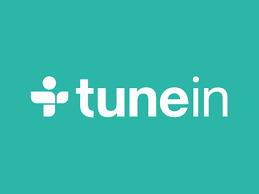Proposed German SDR Network
/A Software Defined Radio (SDR) consists of a high-frequency transmitter and receiver, in which smaller or larger shares of the signal processing can be performed by computer software.
With the L-wide SDR network, it will be possible for 120 users to simultaneously and independently use the receivers in the network via the Internet to monitor the frequency range of 100 kHz to 60 MHz. This equates to each site being used by up to 8 users.
"The propagation conditions in Germany and an amateur's own transmission can be monitored by radio amateurs from around the world using various SDR locations in Germany. The intense, discussion as to the value of a 60 MHz wide frequency range can now be judged by everyone, "said Stefan Scharfenstein (DJ5KX), chairman of the Bad Honnef radio amateurs club, a major player in the project.
At the tender for the multi-user WebSDR network 31 local DARC clubs showed interest from which 15 were selected. The clubs location, their activity level in the hobby and availability of good Internet access were taken into account in the choice of the 15 clubs to host the SDRs as stated by DARC Executive Christian Entsfellner (DL3MBG) at the presentation of the project at the end of last year.
The globally unique WebSDR Network in Germany will be installed at the following locations:
Schwabach-Rotz (B13), Norderstedt (E12), Wetzlar (F19), Bad Honnef (G09), Neuwied (K08), Husum (M04), Rheine (N16), Stadtlohn (N53), Hagen (O08), Leonberg ( P24), Wuppertal (R13), Zwickau (S60), Schönau (S65), Günzburg (T02) Ludwigslust (V28) and the "Physikalisch-Technische Bundesanstalt" in Braunschweig
The technical decision of the SDR to be used was the amateur radio enthusiasts developed HiQ SDR from DB1CC. Stefan Goerg (DL2STG) is responsible to develop the R2T2s firmware and Linux code. Implementation lead of the DSP server / client side is Michael Wild (DL2FW).
This nationwide network of SDR receivers is unique in the worldwide amateur radio. So far there have been only isolated locations with similar technology. e.g. since 2008 at the Dutch University of Twente.
Currently, the prototype is being tested extensively. The handover of the equipment is expected shortly.
The cost is 1300 € per unit. The used SDR concept combines control processor, transmitter and receiver.
The club funds required for the procurement came from the project-related promotion of DARC "Pro" membership "in 2014. The devices remain in the inventory of the DARC in Baunatal and are on "permanent loan" to the individual clubs.



